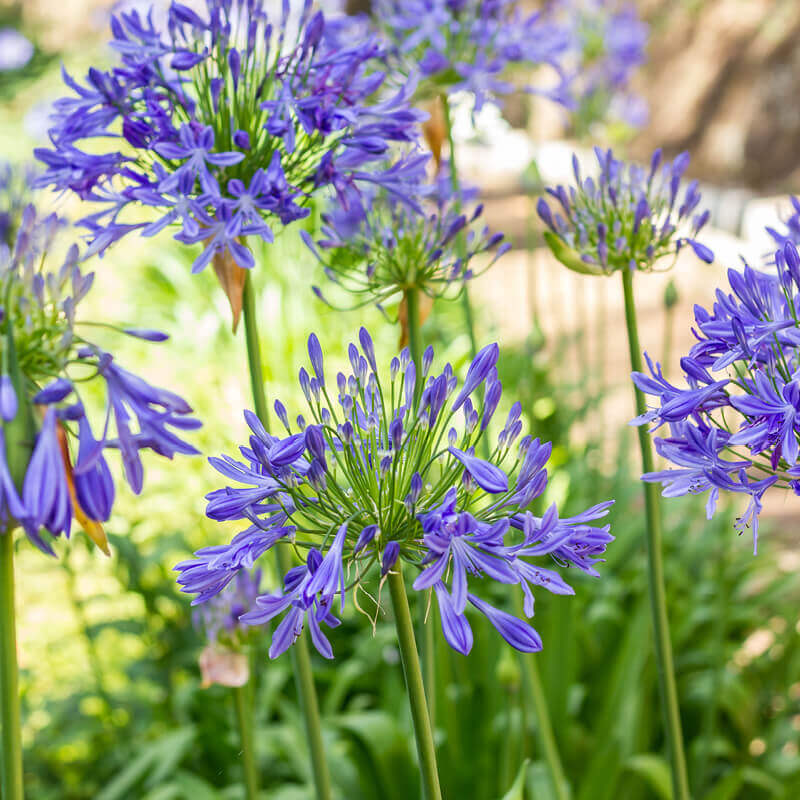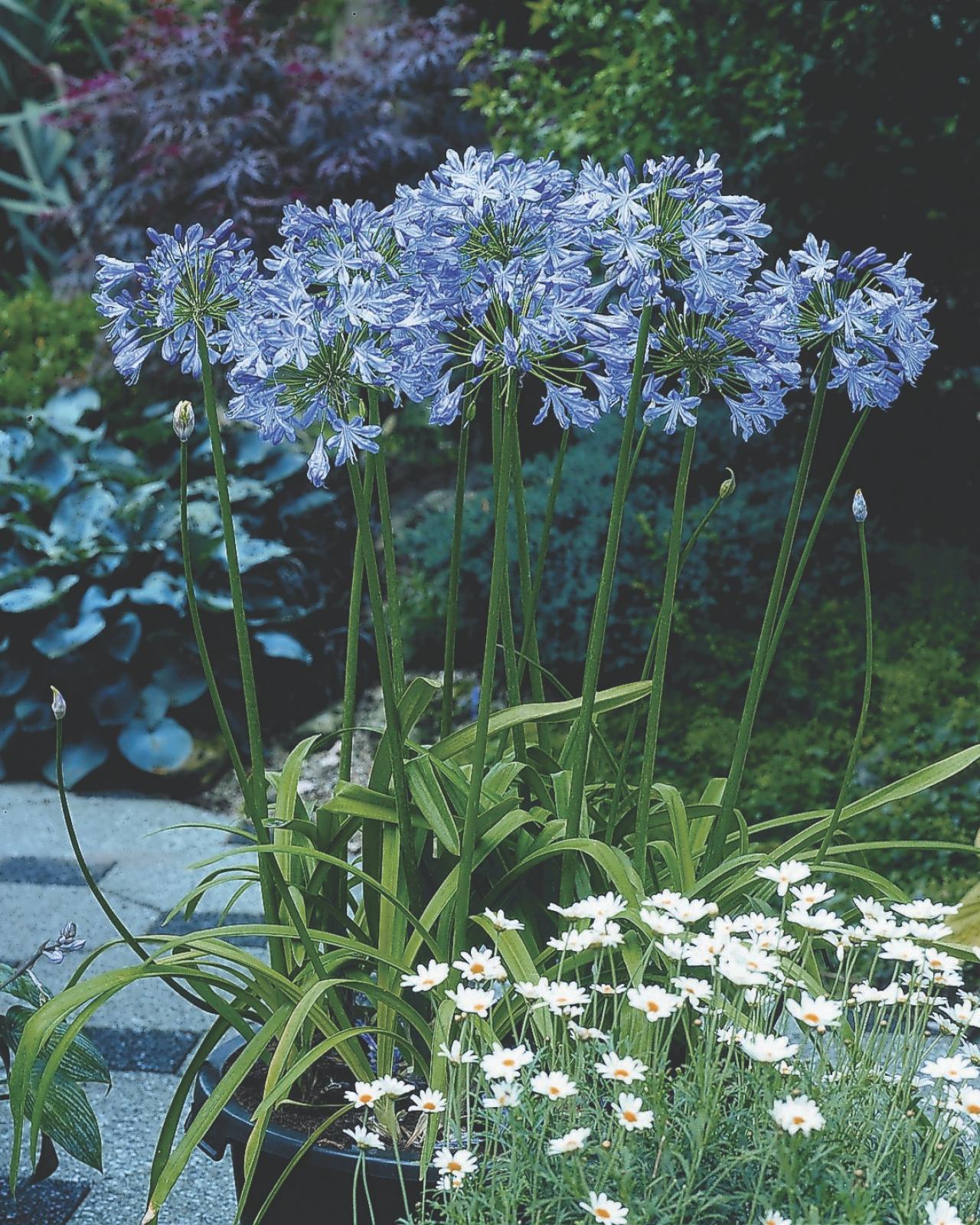Seasonal Agapanthus Care: Getting Ready For Winter and Summertime
Seasonal Agapanthus Care: Getting Ready For Winter and Summertime
Blog Article
Grasping the Art of Agapanthus Care: Important Steps for Healthy And Balanced Growth and Vivid Blooms
In the realm of cultivation, the cultivation of agapanthus stands as a satisfying endeavor for those who seek to nurture these stylish flowering plants. From choosing the best variety to mastering trimming techniques, the trip towards growing thriving agapanthus plants is complex and holds the crucial to opening the full potential of these herb gems.

Picking the Right Agapanthus Variety

When choosing the appropriate Agapanthus selection for your yard, consider factors such as environment suitability, flower color, and development behavior. In addition, take into consideration the climate in your region to make sure the Agapanthus variety you select can grow in your specific problems. Comprehending the development practice of various Agapanthus ranges is vital for correct placement within your yard.
Suitable Growing Conditions
Taking into consideration the optimal ecological requirements is essential for effective Agapanthus cultivation. Agapanthus thrives in well-draining dirt with a somewhat acidic to neutral pH level. When growing, pick a location that receives full sunlight to partial color. In hotter climates, providing some mid-day color can protect against scorching of the leaves. Agapanthus plants are delicate to chilly temperatures and must be safeguarded from frost throughout winter season.
To ensure healthy and balanced development and vivid flowers, plant Agapanthus light bulbs at a depth of about 2-4 inches and space them 8-12 inches apart. Including raw material, such as garden compost, to the soil can boost drain and fertility, advertising robust origin advancement. Mulching around the base of the plants assists preserve dampness and subdues weed development. Routine watering is essential, specifically during the growing period, to keep the soil constantly damp however not soaked.
Watering and Feeding Tips
Preserving proper moisture levels and supplying vital nutrients are key elements in the care regimen for Agapanthus plants. When it comes to watering Agapanthus, it is critical to strike a balance. These plants choose continually moist soil however are vulnerable to root rot if overwatered.
Feeding Agapanthus is important for promoting healthy and balanced growth and respected flowers. Use a well balanced plant food, such as a 10-10-10 formula, in the very early springtime as brand-new development emerges. Repeat this application every 6-8 weeks throughout the growing season. Prevent excessive fertilization, as it can cause lush foliage at the cost of blossoms. Always follow the manufacturer's instructions for appropriate dilution and application techniques. By complying with these watering and fertilizing ideas, you can ensure your Agapanthus plants flourish and create vibrant, lasting blossoms.
Pruning Techniques for Agapanthus
Trimming Agapanthus plants at the appropriate times and with proper methods is essential for preserving their wellness and advertising optimal growth and blooming. The perfect time to prune Agapanthus is in late winter or very early springtime prior to new development emerges.
Deadheading invested blossoms can likewise reroute the plant's power into generating more flowers rather than establishing seeds. If you want to gather seeds for propagation, leave some blossoms to dry and mature on the plant.
Remember to utilize tidy, sharp tools to make precise cuts and lower the danger of introducing illness. Agapanthus. Regular trimming will certainly assist maintain your Agapanthus looking healthy and cool while making certain an abundant screen of lovely blooms
Handling Usual Pests and Diseases
After guaranteeing appropriate pruning strategies for Agapanthus, it is necessary to address usual bugs and diseases that can influence the wellness and vitality of these plants. One common bug that affects Agapanthus is the Agapanthus gall midget.
Another usual concern is fungal fallen leave area, which provides as dark lesions on the fallen leaves. To avoid fungal diseases, ensure excellent air blood circulation around the plants, stay clear of overhanging watering, and remove any infected fallen leaves quickly. Additionally, Agapanthus plants can experience Recommended Reading root rot if they are planted in inadequately draining dirt. To avoid this, plant Agapanthus in well-draining soil and prevent overwatering. By being alert and taking prompt action against illness and pests, you can assist your Agapanthus plants flourish and create dynamic blossoms.

Conclusion
Finally, mastering the art of agapanthus treatment involves choosing the appropriate selection, supplying optimal growing conditions, appropriate watering and feeding, ideal pruning methods, and dealing with typical bugs and illness. By complying with these necessary steps, you can guarantee healthy growth and vivid flowers for your agapanthus plants. Keep in mind to consistently keep track of and maintain your Get the facts plants to promote their overall well-being and long life.
To make certain healthy growth and vivid flowers, plant next page Agapanthus bulbs at a depth of about 2-4 inches and room them 8-12 inches apart. By adhering to these watering and fertilizing pointers, you can guarantee your Agapanthus plants grow and generate vivid, long-lasting blossoms.
One typical parasite that influences Agapanthus is the Agapanthus gall midge. In addition, Agapanthus plants can endure from root rot if they are grown in badly draining soil. By complying with these necessary steps, you can make sure healthy and balanced development and vibrant blossoms for your agapanthus plants.
Report this page